Corner of Webster and Golden Gate Avenue
Park behind the Rosa Parks Senior Center
Western Addition
I have driven past this park one thousand times and have always wondered about this tree stump. Then one day my dear friend Netra Roston told me about an artist named Sargent Johnson. Sargent Johnson was not a stranger to this blog, his WPA work is at the Maritime Museum.
Born in Boston on October 7, 1887, Sargent Claude Johnson was the third of six children of Anderson and Lizzie Jackson Johnson. Anderson Johnson was of Swedish ancestry, and his wife was Cherokee and African American. All of the children were fair enough in complexion to be considered white, and several of Johnson’s sisters preferred to live in white society. Sargent, however, was insistent upon identifying with his African-American heritage throughout his life.
The Johnson children were orphaned by the deaths of their father in 1897 and their mother in 1902. The children spent their early years in Washington, D.C., with an uncle, Sherman William Jackson, a high school principal whose wife was May Howard Jackson, a noted sculptress who specialized in portrait busts of African Americans. It was probably while young Sargent was living with his aunt that he developed his earliest interest in sculpture.
Johnson arrived in the San Francisco area in 1915, during the time of the Panama Pacific International Exposition, which impressed him greatly.
The same year Johnson arrived in San Francisco, he met and married Pearl Lawson, an African American from Georgia who had moved to the Bay Area. The couple had one child, Pearl Adele, who was born in 1923. The couple separated in 1936 and shortly afterwards Mrs. Johnson was hospitalized at Stockton State Hospital, where she died in 1964.
Johnson worked at various jobs during his first years in San Francisco but also attended two art schools, the A. W. Best School of Art and the California School of Fine Arts. Johnson was enrolled at the latter school from 1919 to 1923 and from 1940 to 1942. He studied first under the well-known sculptor Ralph Stackpole for two years, and for a year with Beniamino Bufano. Johnson’s student work at the California School of Fine Arts was awarded first prizes in 1921 and 1922.
The 1930s were the most productive decade in Johnson’s career. The W.P.A. Federal Art Project provided a number of opportunities for Johnson during the late 1930s in the Bay Area. Johnson’s first large W.P.A. project was an organ screen carved of redwood in low relief for the California School of the Blind in Berkeley. The eighteen-by-twenty-four-foot panel was completed in 1937 and installed in the school’s chapel. In 1939 he undertook another W.P.A. project, decorating the interior of the San Francisco Maritime Museum in Aquatic Park.
For the Golden Gate International Exposition Johnson completed his largest figures. He designed two eight-foot-high cast stone figures, which were displayed around the fountain in the Court of Pacifica. Johnson’s figures depicted two Incas seated on llamas and were distinctly East Indian in inspiration. They are known as the “happy Incas playing the Piper of Pan,”. He also designed three figures symbolizing industry, home life, and agriculture for the Alameda-Contra Costa Building at the Exposition.
Johnson moved a number of times in the final fifteen years of his life. Following an illness in 1965, Johnson finally settled in a small hotel room in downtown San Francisco. In October 1967 Johnson died there of a heart attack.
This was Johnson’s last large work. It is not titled, and I could find out literally nothing about it and how it came to be sitting at this corner. The brochure that Netra gave to me was regarding a fundraiser titled Reclaiming Our Treasures. The intent was to raise funds to restore and resurrect the “log” along with the intent to place an historical marker near it. The fundraiser took place in 1997, I have not been able to find out anything more.
The Smithsonian has a transcript of a delightful conversation between Johnson and fellow artist Mary McChesney about Johnson’s work that can be found around San Francisco. You can read it here.
update 2016: The log has been removed and is now with the University of California for both authentication and potential restoration. It most likely will not return to this location.
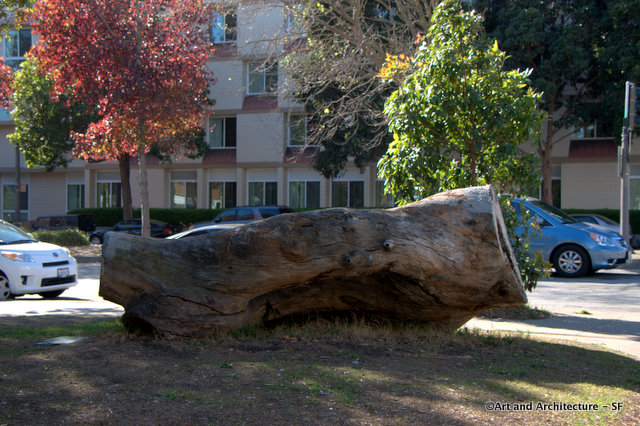
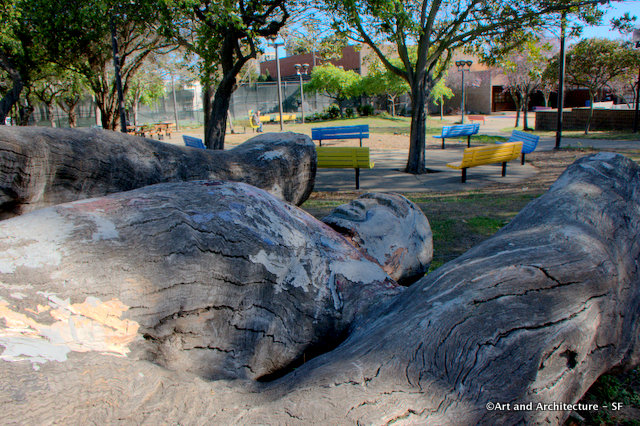

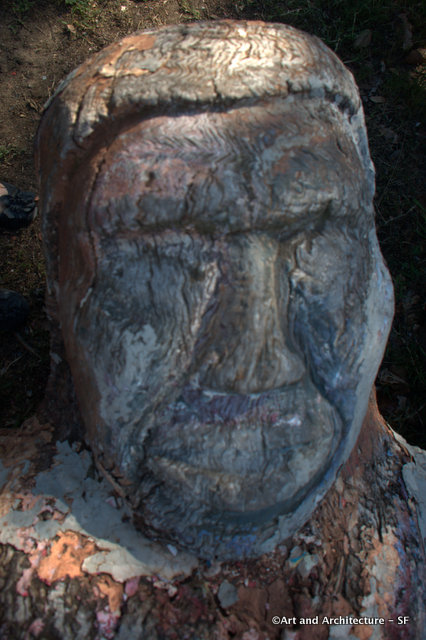
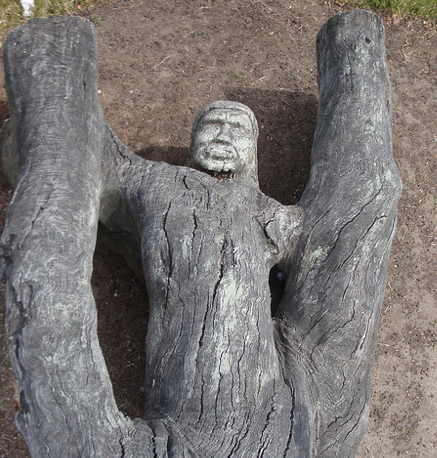
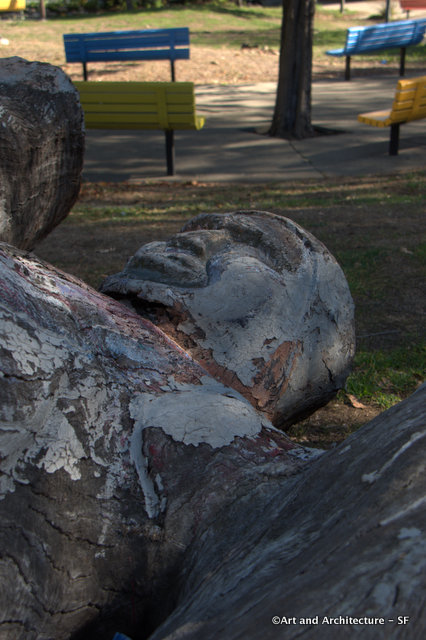
Such an unusual piece!
[…] This carved sandstone entry to the Maritime Museum was done as a Federal Arts Project (FAP) by Sargent Johnson. Johnson was in this site before for the log. […]